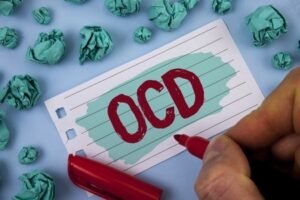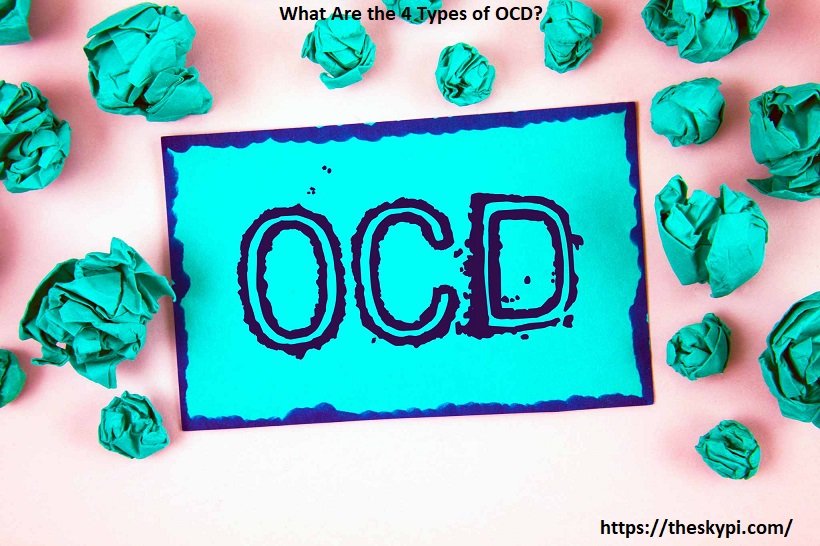What Are the 4 Types of OCD? Obsessive-Compulsive Disorder (OCD) is a mental health condition characterized by unwanted and intrusive thoughts (obsessions) and repetitive behaviors or mental acts (compulsions) aimed at reducing the distress caused by these thoughts. OCD can significantly impact daily functioning and quality of life. While OCD manifests in various forms, it is generally categorized into four primary types: contamination and cleaning, symmetry and ordering, intrusive thoughts, and hoarding. This article explores each type in detail, providing insight into their symptoms, causes, and treatment options.
1. Contamination and Cleaning OCD
Symptoms
Contamination and cleaning OCD, often referred to simply as contamination OCD, involves an intense fear of germs, dirt, or other contaminants. People with this type of OCD may experience:
- Fear of Germs and Illness: An overwhelming fear of getting sick or making others sick due to perceived contamination.
- Avoidance Behaviors: Avoid places or situations where contamination might occur, such as public restrooms or hospitals.
- Compulsive Cleaning: Excessive hand washing, cleaning, or sanitizing to remove perceived contaminants. This can include long and ritualistic cleaning routines.
Causes
The exact cause of contamination OCD is not fully understood, but it is believed to result from a combination of genetic, neurological, and environmental factors. Traumatic experiences, such as illness or exposure to contaminants, can also trigger or exacerbate this type of OCD.
Treatment
Effective treatments for contamination OCD include:
- Cognitive-behavioral therapy (CBT): Specifically, Exposure and Response Prevention (ERP), which involves gradually exposing individuals to feared contaminants while preventing compulsive cleaning behaviors.
- Medications: Selective serotonin reuptake inhibitors (SSRIs) can help reduce the symptoms of OCD.
- Mindfulness and Relaxation Techniques: These can help manage anxiety and stress associated with contamination fears.
2. Symmetry and Ordering OCD
Symptoms
Symmetry and ordering OCD, also known as symmetry OCD, involves an obsession with order, symmetry, and balance. Symptoms include:
- Need for Symmetry: An overwhelming need for items to be arranged in a specific order or to be symmetrical.
- Compulsive Arranging: Repeatedly arranging and rearranging objects until they “feel right.”
- Ritualistic Behavior: Performing tasks in a specific order or repeating actions to achieve a sense of balance.
Causes
Symmetry and ordering OCD are thought to arise from similar factors as other What Are the 4 Types of OCD, including genetics, brain structure and function, and environmental influences. A family history of OCD or other anxiety disorders can increase the risk.
Treatment
Treatment approaches for symmetry OCD include:
- Cognitive-Behavioral Therapy (CBT): ERP is particularly effective, where individuals are exposed to situations that challenge their need for symmetry and taught to resist the urge to perform ordering rituals.
- Medications: SSRIs can help reduce obsessive and compulsive symptoms.
- Behavioral Strategies: Techniques such as habit reversal training can help manage compulsive behaviors.
3. Intrusive Thoughts OCD
Symptoms
Intrusive thoughts OCD, sometimes referred to as pure O, involves distressing and unwanted thoughts that are often violent, sexual, or blasphemous. Symptoms include:
- Disturbing Thoughts: Persistent, unwanted thoughts or mental images that are often contrary to the individual’s values and beliefs.
- Mental Compulsions: Repeated mental rituals, such as counting, praying, or neutralizing thoughts to reduce the distress caused by intrusive thoughts.
- Avoidance: Avoiding situations or people that may trigger intrusive thoughts.
Causes
The causes of intrusive thoughts of OCD are multifaceted, involving genetic predisposition, neurobiological factors, and environmental triggers. Stressful life events or trauma can also contribute to the onset or exacerbation of symptoms.
Treatment
Effective treatments for intrusive thoughts OCD include:
- Cognitive-Behavioral Therapy (CBT): ERP helps individuals face and tolerate distressing thoughts without engaging in mental compulsions.
- Mindfulness-Based Cognitive Therapy (MBCT): This approach combines mindfulness practices with cognitive therapy techniques to help individuals manage intrusive thoughts.
- Medications: SSRIs are commonly prescribed to help manage symptoms.
4. Hoarding OCD
Symptoms
Hoarding OCD involves the excessive acquisition of items and an inability to discard them, leading to cluttered living spaces. Symptoms include:
- Difficulty Discarding Items: An intense fear of losing items or the perceived need to save them, regardless of their value.
- Cluttered Living Spaces: Accumulation of items that interfere with the ability to use living spaces as intended.
- Emotional Distress: Anxiety, shame, or guilt associated with hoarding behaviors.
Causes
Hoarding OCD is believed to result from a combination of genetic, neurological, and environmental factors. It is often associated with other mental health conditions, such as depression and anxiety.
Treatment
Treatment options for hoarding OCD include:
- Cognitive-Behavioral Therapy (CBT): Specifically, CBT is tailored to hoarding behaviors, focusing on decision-making, organizational skills, and challenging hoarding beliefs.
- Medications: SSRIs may be prescribed to help reduce symptoms.
- Support Groups and Professional Organizers: These can provide additional support and practical assistance in managing hoarding behaviors.

Conclusion
What Are the 4 Types of OCD, Obsessive-Compulsive Disorder (OCD) is a complex and multifaceted condition that manifests in various forms, including contamination and cleaning, symmetry and ordering, intrusive thoughts, and hoarding. Understanding the specific symptoms, causes, and treatment options for each type can help individuals seek appropriate help and manage their condition effectively. With proper treatment, including cognitive-behavioral therapy and medication, individuals with OCD can lead fulfilling and productive lives. If you or someone you know is struggling with OCD, it is important to seek professional help and support What Are the 4 Types of OCD?
FAQs: What Are the 4 Types of OCD?
1. What is Obsessive-Compulsive Disorder (OCD)?
- OCD is a mental health condition characterized by unwanted, intrusive thoughts (obsessions) and repetitive behaviors or mental acts (compulsions) aimed at reducing the distress caused by these thoughts.
2. What Are the 4 Types of OCD?
- The four main types of OCD are:
- Contamination and Cleaning OCD
- Symmetry and Ordering OCD
- Intrusive Thoughts OCD
- Hoarding OCD
3. What is Contamination and Cleaning OCD?
- This type involves an intense fear of germs, dirt, or other contaminants, leading to excessive cleaning and avoidance behaviors to prevent perceived contamination.
4. What is Symmetry and Ordering OCD?
- Symmetry and ordering OCD involves a need for things to be arranged in a specific order or to be symmetrical, leading to compulsive arranging and organizing behaviors.
5. What is Intrusive Thoughts OCD?
- Intrusive thoughts OCD involves persistent, unwanted thoughts or mental images that are often violent, sexual, or blasphemous, leading to mental rituals or avoidance behaviors to reduce distress.



